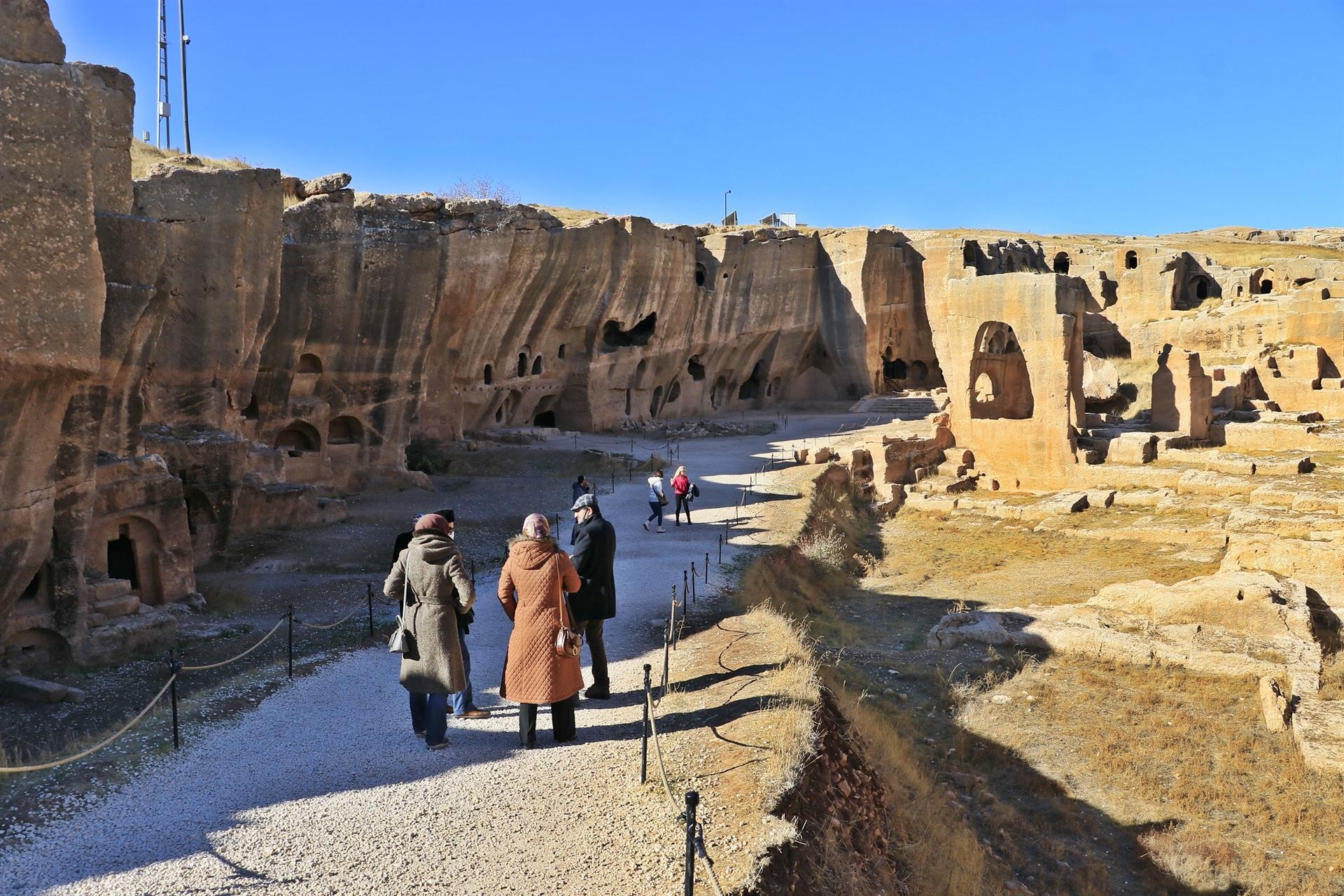New mound found in ancient Dara
MARDİN

A new mound has come to light during the excavation and restoration work in the ancient city of Dara in the southeastern province of Mardin.
Hüseyin Metin, a lecturer at the Kafkas University’s Archaeology Department and the head of the excavations, said: “We had finds dating back to the fourth century B.C. from previous excavations, but during this year’s works, we found a new mound. With new findings, we determined that the city’s history dates back to 3,000 B.C. It is a very important development.”
The new mound in Dara, the last stronghold of the Byzantine Empire in the southeast, dated the ancient city thousands of years ago.
Noting that the period of the sixth century was especially important for the region, Metin said: “The widest known history of Dara is from the sixth century A.D. and later periods. Especially the period of the sixth century is very important for the region because the largest garrison city was also a civil settlement and political administration center, but the subject we pay the most attention to is how much older this city could be.
“From the previous excavations, we had finds until the fourth 4th century A.D., but this year we had a different work to find settlements from this period around the city. And we found a mound in the southwestern part of the city, almost adjacent to the city walls. In this settlement area, which we call ‘Aba Tumulus,’ we obtained ceramics from the Hellenistic period in 3,000 B.C. With new findings, we determined that the history of the city dates back to 3,000 B.C. Thus, we can say that the city is not only a Byzantine settlement of the sixth century, but one of the places that has been continuously inhabited in the region since the prehistoric ages,” Metin added.
Stating that Dara has a history of approximately 5,000 years, Metin said: “The materials we have are also from the Early Bronze Age. These can be found in mound-type settlements, but the general feature of this is as follows: We see that there was an uninterrupted settlement here from the Early Bronze Age to the Hellenistic period. In this respect, this year’s data has been extremely productive, especially in terms of understanding the early history of the city.”
















